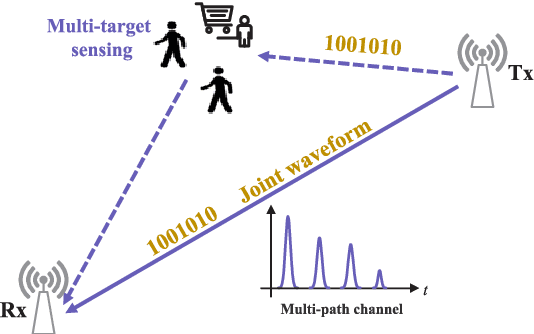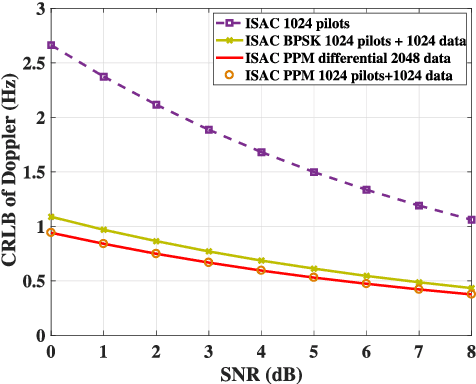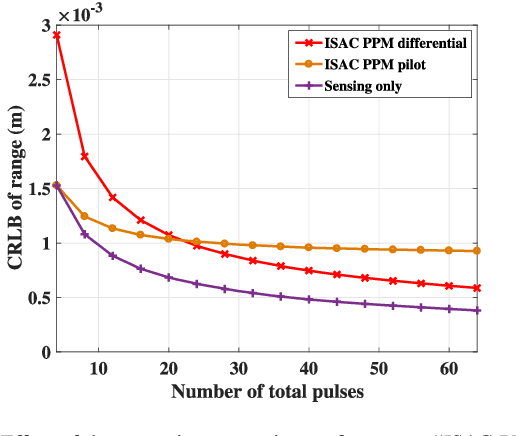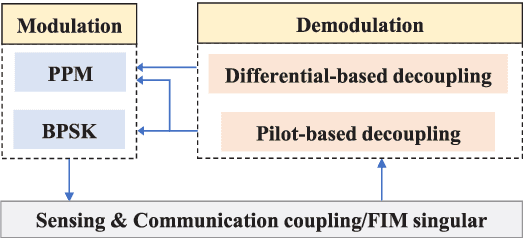Bin Cao
opXRD: Open Experimental Powder X-ray Diffraction Database
Mar 07, 2025Abstract:Powder X-ray diffraction (pXRD) experiments are a cornerstone for materials structure characterization. Despite their widespread application, analyzing pXRD diffractograms still presents a significant challenge to automation and a bottleneck in high-throughput discovery in self-driving labs. Machine learning promises to resolve this bottleneck by enabling automated powder diffraction analysis. A notable difficulty in applying machine learning to this domain is the lack of sufficiently sized experimental datasets, which has constrained researchers to train primarily on simulated data. However, models trained on simulated pXRD patterns showed limited generalization to experimental patterns, particularly for low-quality experimental patterns with high noise levels and elevated backgrounds. With the Open Experimental Powder X-Ray Diffraction Database (opXRD), we provide an openly available and easily accessible dataset of labeled and unlabeled experimental powder diffractograms. Labeled opXRD data can be used to evaluate the performance of models on experimental data and unlabeled opXRD data can help improve the performance of models on experimental data, e.g. through transfer learning methods. We collected \numpatterns diffractograms, 2179 of them labeled, from a wide spectrum of materials classes. We hope this ongoing effort can guide machine learning research toward fully automated analysis of pXRD data and thus enable future self-driving materials labs.
A Survey of Zero-Knowledge Proof Based Verifiable Machine Learning
Feb 25, 2025Abstract:As machine learning technologies advance rapidly across various domains, concerns over data privacy and model security have grown significantly. These challenges are particularly pronounced when models are trained and deployed on cloud platforms or third-party servers due to the computational resource limitations of users' end devices. In response, zero-knowledge proof (ZKP) technology has emerged as a promising solution, enabling effective validation of model performance and authenticity in both training and inference processes without disclosing sensitive data. Thus, ZKP ensures the verifiability and security of machine learning models, making it a valuable tool for privacy-preserving AI. Although some research has explored the verifiable machine learning solutions that exploit ZKP, a comprehensive survey and summary of these efforts remain absent. This survey paper aims to bridge this gap by reviewing and analyzing all the existing Zero-Knowledge Machine Learning (ZKML) research from June 2017 to December 2024. We begin by introducing the concept of ZKML and outlining its ZKP algorithmic setups under three key categories: verifiable training, verifiable inference, and verifiable testing. Next, we provide a comprehensive categorization of existing ZKML research within these categories and analyze the works in detail. Furthermore, we explore the implementation challenges faced in this field and discuss the improvement works to address these obstacles. Additionally, we highlight several commercial applications of ZKML technology. Finally, we propose promising directions for future advancements in this domain.
Robust Deep Joint Source-Channel Coding Enabled Distributed Image Transmission with Imperfect Channel State Information
Nov 19, 2024Abstract:This work is concerned with robust distributed multi-view image transmission over a severe fading channel with imperfect channel state information (CSI), wherein the sources are slightly correlated. Since the signals are further distorted at the decoder, traditional distributed deep joint source-channel coding (DJSCC) suffers considerable performance degradation. To tackle this problem, we leverage the complementarity and consistency characteristics among the distributed, yet correlated sources, and propose an enhanced robust DJSCC, namely RDJSCC. In RDJSCC, we design a novel cross-view information extraction (CVIE) mechanism to capture more nuanced cross-view patterns and dependencies. In addition, a complementarity-consistency fusion (CCF) mechanism is utilized to fuse the complementarity and consistency from multi-view information in a symmetric and compact manner. Theoretical analysis and simulation results show that our proposed RDJSCC can effectively leverage the advantages of correlated sources even under severe fading conditions, leading to an improved reconstruction performance. The open source code of this work is available at:https://dongbiao26.github.io/rdjscc/.
Fundamental Limits of Pulse Based UWB ISAC Systems: A Parameter Estimation Perspective
Oct 17, 2024



Abstract:Impulse radio ultra-wideband (IR-UWB) signals stand out for their high temporal resolution, low cost, and large bandwidth, making them a highly promising option for integrated sensing and communication (ISAC) systems. In this paper, we design an ISAC system for a bi-static passive sensing scenario that accommodates multiple targets. Specifically, we introduce two typical modulation schemes, PPM and BPSK, for data transmission. The essential coupling between sensing and communication is examined through the Fisher information matrix (FIM). Accordingly, we introduce a pilot-based decoupling approach that relies on known time-delays, as well as a differential decoupling strategy that uses a known starting symbol position. Finally, we assess the sensing and communication performance under various modulation and demodulation schemes under the constraints of current UWB standards. This assessment utilizes the Cramer-Rao Lower Bound (CRLB) for sensing and the Shannon capacity limit for communication, offering theoretical insights into choosing suitable data signal processing methods in real-world applications.
Quo Vadis, Motion Generation? From Large Language Models to Large Motion Models
Oct 04, 2024Abstract:Inspired by the recent success of LLMs, the field of human motion understanding has increasingly shifted towards the development of large motion models. Despite some progress, current state-of-the-art works remain far from achieving truly generalist models, largely due to the lack of large-scale, high-quality motion data. To address this, we present MotionBase, the first million-level motion generation benchmark, offering 15 times the data volume of the previous largest dataset, and featuring multimodal data with hierarchically detailed text descriptions. By leveraging this vast dataset, our large motion model demonstrates strong performance across a broad range of motions, including unseen ones. Through systematic investigation, we underscore the importance of scaling both data and model size, with synthetic data and pseudo labels playing a crucial role in mitigating data acquisition costs. Moreover, our research reveals the limitations of existing evaluation metrics, particularly in handling out-of-domain text instructions -- an issue that has long been overlooked. In addition to these, we introduce a novel 2D lookup-free approach for motion tokenization, which preserves motion information and expands codebook capacity, further enhancing the representative ability of large motion models. The release of MotionBase and the insights gained from this study are expected to pave the way for the development of more powerful and versatile motion generation models.
LSVOS Challenge Report: Large-scale Complex and Long Video Object Segmentation
Sep 09, 2024



Abstract:Despite the promising performance of current video segmentation models on existing benchmarks, these models still struggle with complex scenes. In this paper, we introduce the 6th Large-scale Video Object Segmentation (LSVOS) challenge in conjunction with ECCV 2024 workshop. This year's challenge includes two tasks: Video Object Segmentation (VOS) and Referring Video Object Segmentation (RVOS). In this year, we replace the classic YouTube-VOS and YouTube-RVOS benchmark with latest datasets MOSE, LVOS, and MeViS to assess VOS under more challenging complex environments. This year's challenge attracted 129 registered teams from more than 20 institutes across over 8 countries. This report include the challenge and dataset introduction, and the methods used by top 7 teams in two tracks. More details can be found in our homepage https://lsvos.github.io/.
The Instance-centric Transformer for the RVOS Track of LSVOS Challenge: 3rd Place Solution
Aug 20, 2024Abstract:Referring Video Object Segmentation is an emerging multi-modal task that aims to segment objects in the video given a natural language expression. In this work, we build two instance-centric models and fuse predicted results from frame-level and instance-level. First, we introduce instance mask into the DETR-based model for query initialization to achieve temporal enhancement and employ SAM for spatial refinement. Secondly, we build an instance retrieval model conducting binary instance mask classification whether the instance is referred. Finally, we fuse predicted results and our method achieved a score of 52.67 J&F in the validation phase and 60.36 J&F in the test phase, securing the final ranking of 3rd place in the 6-th LSVOS Challenge RVOS Track.
Decision Transformer for IRS-Assisted Systems with Diffusion-Driven Generative Channels
Jun 28, 2024


Abstract:In this paper, we propose a novel diffusion-decision transformer (D2T) architecture to optimize the beamforming strategies for intelligent reflecting surface (IRS)-assisted multiple-input single-output (MISO) communication systems. The first challenge lies in the expensive computation cost to recover the real-time channel state information (CSI) from the received pilot signals, which usually requires prior knowledge of the channel distributions. To reduce the channel estimation complexity, we adopt a diffusion model to automatically learn the mapping between the received pilot signals and channel matrices in a model-free manner. The second challenge is that, the traditional optimization or reinforcement learning (RL) algorithms cannot guarantee the optimality of the beamforming policies once the channel distribution changes, and it is costly to resolve the optimized strategies. To enhance the generality of the decision models over varying channel distributions, we propose an offline pre-training and online fine-tuning decision transformer (DT) framework, wherein we first pre-train the DT offline with the data samples collected by the RL algorithms under diverse channel distributions, and then fine-tune the DT online with few-shot samples under a new channel distribution for a generalization purpose. Simulation results demonstrate that, compared with retraining RL algorithms, the proposed D2T algorithm boosts the convergence speed by 3 times with only a few samples from the new channel distribution while enhancing the average user data rate by 6%.
PVUW 2024 Challenge on Complex Video Understanding: Methods and Results
Jun 24, 2024



Abstract:Pixel-level Video Understanding in the Wild Challenge (PVUW) focus on complex video understanding. In this CVPR 2024 workshop, we add two new tracks, Complex Video Object Segmentation Track based on MOSE dataset and Motion Expression guided Video Segmentation track based on MeViS dataset. In the two new tracks, we provide additional videos and annotations that feature challenging elements, such as the disappearance and reappearance of objects, inconspicuous small objects, heavy occlusions, and crowded environments in MOSE. Moreover, we provide a new motion expression guided video segmentation dataset MeViS to study the natural language-guided video understanding in complex environments. These new videos, sentences, and annotations enable us to foster the development of a more comprehensive and robust pixel-level understanding of video scenes in complex environments and realistic scenarios. The MOSE challenge had 140 registered teams in total, 65 teams participated the validation phase and 12 teams made valid submissions in the final challenge phase. The MeViS challenge had 225 registered teams in total, 50 teams participated the validation phase and 5 teams made valid submissions in the final challenge phase.
2nd Place Solution for MeViS Track in CVPR 2024 PVUW Workshop: Motion Expression guided Video Segmentation
Jun 20, 2024

Abstract:Motion Expression guided Video Segmentation is a challenging task that aims at segmenting objects in the video based on natural language expressions with motion descriptions. Unlike the previous referring video object segmentation (RVOS), this task focuses more on the motion in video content for language-guided video object segmentation, requiring an enhanced ability to model longer temporal, motion-oriented vision-language data. In this report, based on the RVOS methods, we successfully introduce mask information obtained from the video instance segmentation model as preliminary information for temporal enhancement and employ SAM for spatial refinement. Finally, our method achieved a score of 49.92 J &F in the validation phase and 54.20 J &F in the test phase, securing the final ranking of 2nd in the MeViS Track at the CVPR 2024 PVUW Challenge.
 Add to Chrome
Add to Chrome Add to Firefox
Add to Firefox Add to Edge
Add to Edge